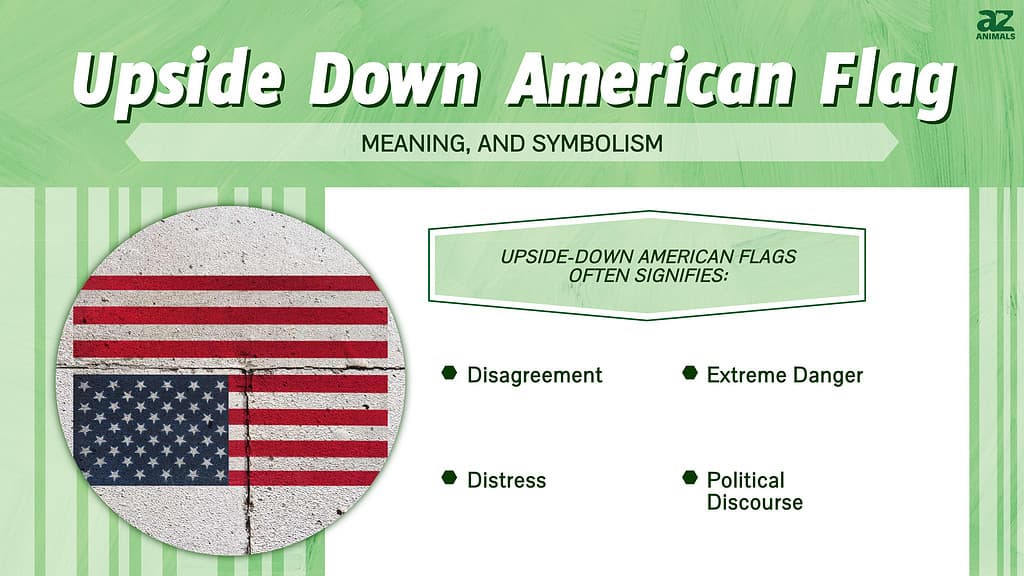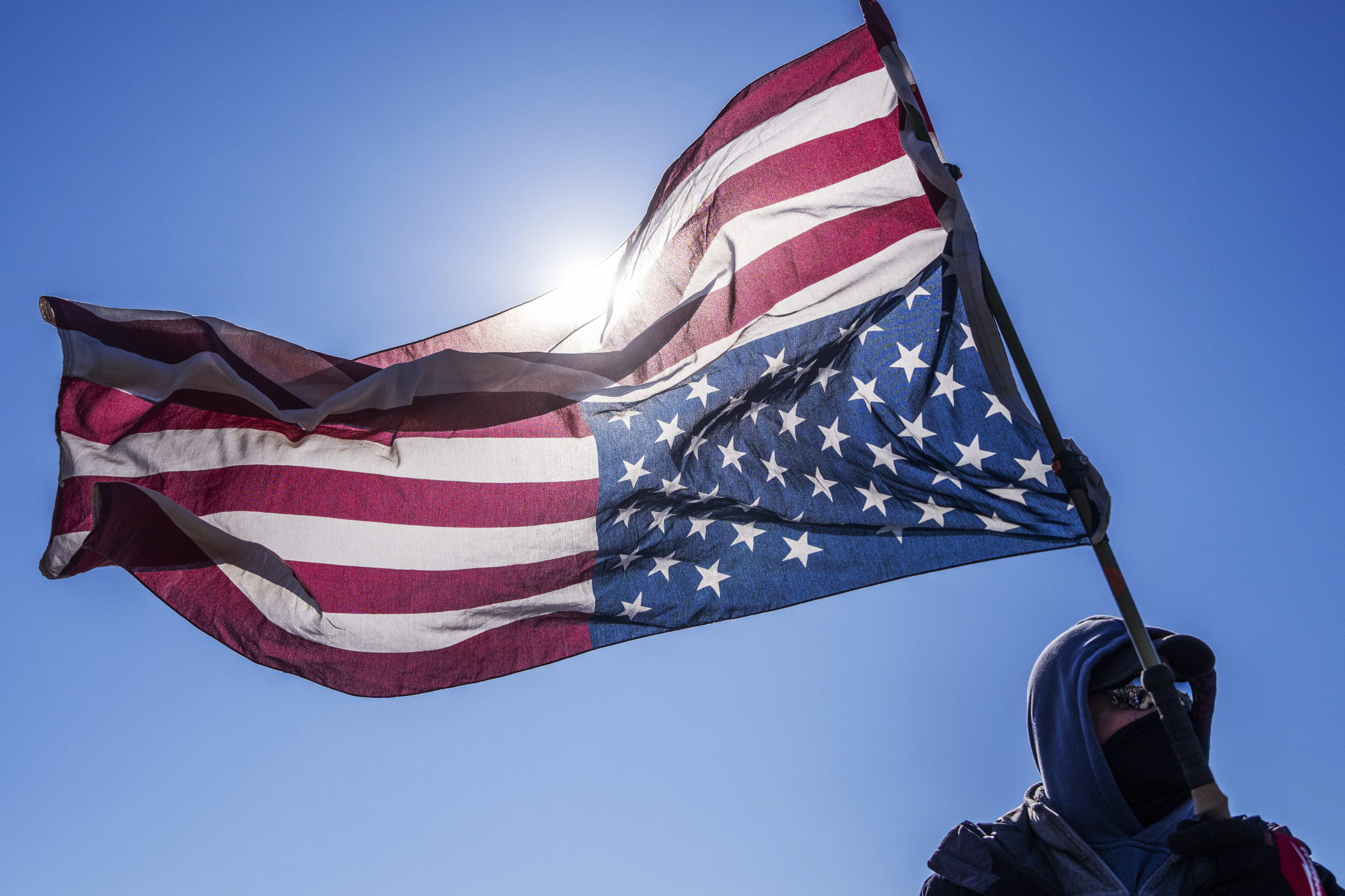Upside Down American Flag: Meaning & Controversy - Explained
What does it truly signify when an American flag is flown upside down? Beyond the traditional distress signal, the inverted flag has become a powerful symbol of protest, representing a spectrum of grievances, from political dissent to calls for societal reform, and its use has ignited passionate debates across the nation.
The ubiquitous American flag, a symbol steeped in tradition and representing the ideals of freedom, liberty, and national pride, is often a source of unity. However, its very nature allows for adaptation, and the flag has become a canvas upon which various messages are painted. Flags can suggest partisan identities, express allegiance to specific ideologies, or even subtly signal a person's openness to certain ideas or groups. Lately, a particular variant of this symbolic language has been gaining traction: the upside-down American flag.
This practice, far from being a new phenomenon, has a complex history. The upside-down flag is, at its core, a recognized distress signal. As per the U.S. Flag Code, it should be used only in instances of extreme danger to life or property. In these contexts, the inverted flag serves as a desperate cry for help, signaling that urgent assistance is needed. This can encompass a variety of situations, from natural disasters to individual emergencies requiring medical attention. But, the symbolism of the upside-down flag transcends its practical application.
The use of the inverted flag has deep roots in the history of the United States. During times of national crisis or widespread unrest, the upside-down flag has often emerged as a potent symbol of protest. It can be seen as a call for reform, a representation of a nation in pain or crisis, and a voice for those feeling unheard or overlooked. Communities experiencing civil unrest or those affected by political decisions have utilized this form of protest to draw attention to issues at hand.
The symbolic use of an inverted flag isn't a recent development, it has represented various causes and sentiments over the country's history, even in the wake of the January 6th insurrection at the U.S. Capitol. When a disgruntled voter decided to fly the American flag upside down on her front porch after the 2016 election, she viewed it as the patriotic thing to do.
The act of flying the American flag upside down is far more than just a visual statement; it has evolved into a powerful form of expression that can resonate with different groups and in different scenarios. It carries various nuances depending on the context.
- Carlos Vives Un Icono De La Msica Latina Discover Now
- Cornelia Brown Frustration Backtoschool Guidelines Change Latest
The controversy and debate surrounding the upside-down flag are not new. It has been employed as a form of protest in various contexts. Protestors have gathered after events like the overturning of Roe v. Wade by the Supreme Court, expressing their discontent. The backwards black American flag also represents an inverted version of the regular American flag. It can be associated with protests, rebellion, or a symbol of distress.
In the wake of contemporary events, many are deploying the use of the inverted flag as a form of expression.
In the legal landscape, the question of whether displaying an upside-down flag constitutes protected free speech has been addressed. In Washington, the court has addressed this matter, with rulings affirming the right to express such sentiments. This has further fueled its use as a form of protest.
The criterion of extreme danger to life or property, as it applies to the proper use of the inverted flag as a distress signal, is often subject to interpretation. While the U.S. Flag Code offers guidelines, the specific circumstances can influence how this is interpreted, making it a point of debate in many cases.
The history of the inverted American flag extends back through moments of the Civil Rights movement. As Martin Luther King Jr. and other civil rights activists worked to end discrimination, the flag was used during social justice campaigns. While the passage of the Civil Rights Act in 1964 was a victory, the symbol would still be used in the name of a cause.
The American flag, a treasured emblem of the United States, comes with specific protocols for its display. The United States Code specifies that the flag should be flown upside down only to signal dire distress. The rules and customs around the American flag provide a framework for its use, yet the inverted flag's meaning goes beyond these regulations.
The interpretation and meaning of the upside-down American flag can change depending on the situation. While it can serve as a call for help or show the need for assistance, the flag also represents the need to protest or symbolize the desire to change.
Here is a breakdown of the various flags mentioned in the article, and the meanings associated with them.
| Flag | Meaning |
|---|---|
| Regular American Flag | Symbol of patriotism, national pride, and unity. |
| Upside-Down American Flag | Distress signal, protest against political decisions, expression of discontent, or a call for reform. |
| Backwards Black American Flag | Often associated with protests, rebellion, or a symbol of distress. |
The American flag, a symbol of unity and national pride, takes on a potent new meaning when inverted. It's a signal of distress, a form of protest, and a rallying cry for change. Understanding the nuances of this evolving symbol is crucial for navigating the complex landscape of contemporary America.



Detail Author:
- Name : Ms. Leanne Keeling
- Username : tiara.kovacek
- Email : donny.luettgen@rau.com
- Birthdate : 2006-12-04
- Address : 2031 Bryana Lakes Dorotheastad, CT 11775-6498
- Phone : (863) 359-8276
- Company : Quigley and Sons
- Job : Plant and System Operator
- Bio : Tenetur voluptas et iure veniam. Quis dolore possimus ut molestiae deleniti. Animi in culpa est enim deserunt.
Socials
twitter:
- url : https://twitter.com/oleta.eichmann
- username : oleta.eichmann
- bio : Sed distinctio enim qui possimus eum. Quod sint quisquam quidem id explicabo repellat. Similique vero non veniam dolor autem.
- followers : 6348
- following : 201
facebook:
- url : https://facebook.com/oleta_eichmann
- username : oleta_eichmann
- bio : Corporis exercitationem maiores voluptatibus sequi. Ut non omnis saepe nemo.
- followers : 3644
- following : 1031
linkedin:
- url : https://linkedin.com/in/oleta_eichmann
- username : oleta_eichmann
- bio : Mollitia porro iure dolores qui mollitia labore.
- followers : 5008
- following : 2887
instagram:
- url : https://instagram.com/oleta.eichmann
- username : oleta.eichmann
- bio : Tempore non quia doloribus. Quod perferendis repellat illum. Aliquid ipsum hic eum quia.
- followers : 5959
- following : 1126
tiktok:
- url : https://tiktok.com/@oleta9005
- username : oleta9005
- bio : Accusamus sunt officia similique soluta totam assumenda ducimus.
- followers : 2141
- following : 1859